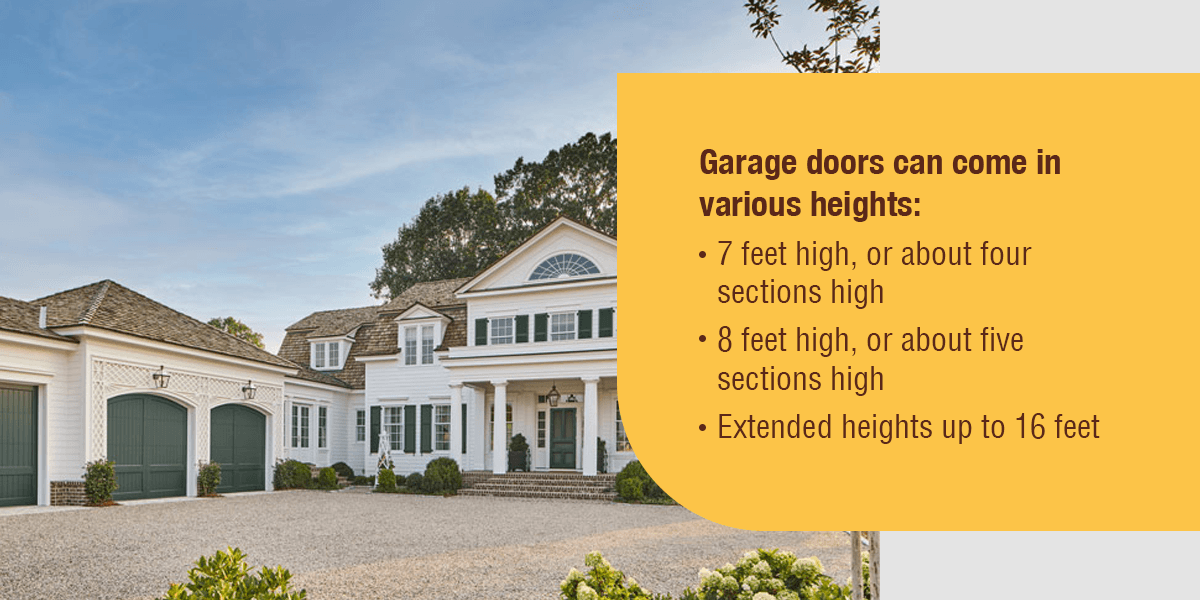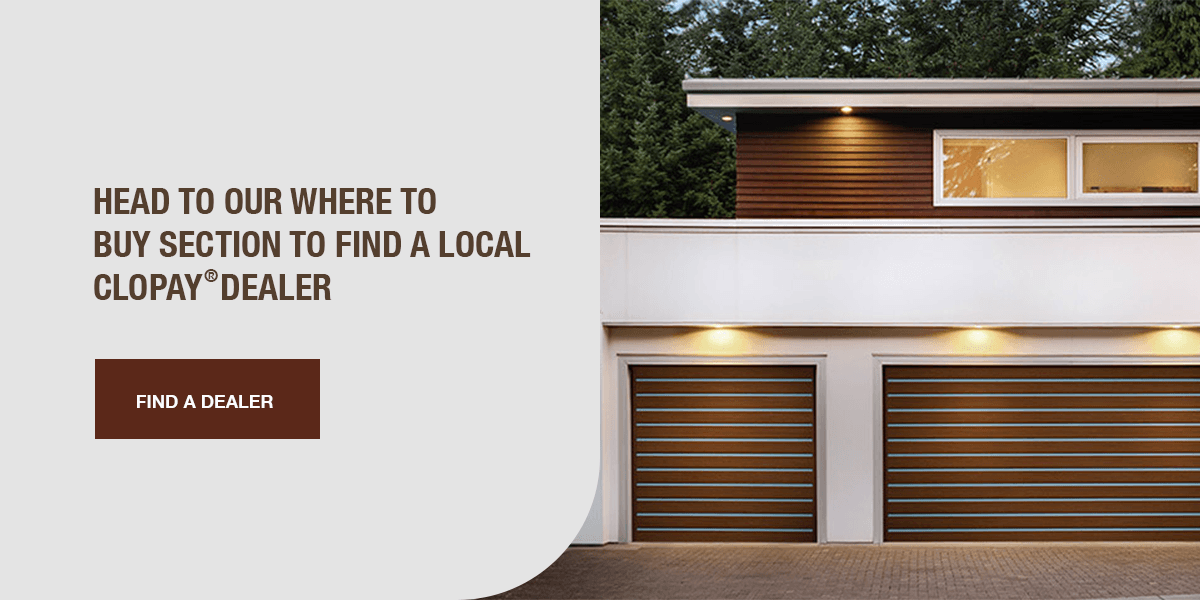Track Types
Generally, there are two track types for a garage door:
- Standard: If a garage has the necessary measurements above, behind and on either side, the track will have a standard arrangement.
- Low headroom: Low headroom garages do not have the height above for a standard layout. In these layouts, there is a second track that moves the top section of the door so that it won't hit the ceiling. Low headroom layouts can have the springs mounted above the door or behind it.
Garage door tracks can also accommodate more unique garages, like those with extra tall headroom or pitched roofs. Learn more about the different garage door track options.
Track Components
Garage door tracks consist of three components:
- Vertical track: These tracks are located on either side of the opening.
- Horizontal track: These tracks attach to the ceiling and help hold the door in place when it's open.
- Radius: These curved track pieces create the transition from the vertical track to the horizontal track.
Standard Heights

Garage doors can come in various heights:
- 7 feet high, or about four sections high
- 8 feet high, or about five sections high
- Extended heights up to 16 feet
Where to Buy Replacement Garage Door Parts
Clopay® is your number one source for replacement garage door components. When you have a quality garage door, you only want to use quality parts to replace any parts that may be worn out on your door. Your local Clopay® Dealer is the best place to turn for information as well as the best place to get professional service for your garage door. Head to our Where to Buy section to find a local Clopay Dealer.
